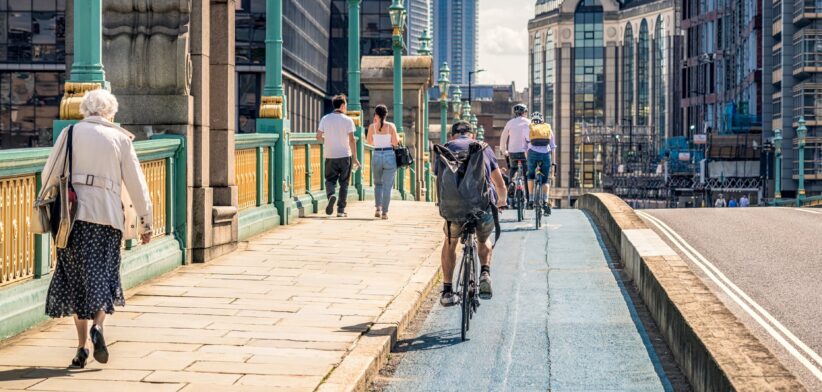Three quarters of Australians support building more walking and cycling paths, prompting a call for extra investment in active transport infrastructure.
An Australia Institute survey found 76 percent of respondents would like to see more paths in their areas, with more than half (60 percent) also in support of a government e-bike subsidy scheme.
Institute Research Manager Dr Morgan Harrington said a major obstacle to turning around falling cycling rates was a lack of infrastructure.
Dr Harrington said cycling rates had been declining and currently only 0.7 percent of Australians cycled to work.
“A major obstacle to improving cycling rates is that people don’t feel safe riding in painted bike lanes.
“In most parts of Australia there’s no option but to share the road with big, heavy cars. Investing in separated bike paths would help all commuters get around our cities more efficiently.”
He said currently less than one percent of federal road funding was going toward infrastructure for active transport.
“The Commonwealth Government’s four year, $100m National Active Transport Fund has only enough money to build 25-50 km of new, separated bike paths.
“In contrast, France plans to invest EUR 2 billion (AUD $3.2 billion) in cycling infrastructure between 2023 and 2027 and has committed to building 100,000 km of bicycle lanes by 2030.”
Dr Harrington said that there was strong public support for a range of active transport reforms that would help ease traffic congestion and improve public health.
He said the survey also found two-thirds of Australians (62 percent) were in favour of a cycling mileage allowance and 63 percent supported schemes that would allow for internal combustion engine cars to be traded in for EVs, e-bikes and public transport tickets.
“In cities across Australia, cars continue to rule the road. Unless we build the infrastructure that gives people other options for getting around now, we’ll only have more problems with congestion and pollution in the future. This is not a question of spending more money on roads, but spending the money we already have differently.
“With the rise of e-bikes and e-scooters it has never been easier for people to make the switch to active transport. A modest redirection in spending from government could make a massive difference to our transport culture and our national wellbeing.”
Dr Harrington said the Institute recommended:
- Increased funding for active transportation to the equivalent of at least 10 percent of road-related expenditure.
- Introduction of a tax-deductible per/km ride to work mileage allowance similar to programs in place in Europe, where employees can claim an allowance for riding to work ($A0.25-0.50 per kilometre, capped.).
- Introduction of a scheme that would allow people to trade in end-of-life internal combustion engine cars for EVs, e-bikes and public transport tickets. Such schemes exist in Finland ($3300 credit) Canada ($1100 credit) and Lithuania ($1600 credit).
- Legalising private e-scooters in all states and territories, with supporting rules, regulation, and infrastructure.
- Subsidising the purchase of e-bikes.
Read the report: Proactive investment Policies to increase rates of active transportation








